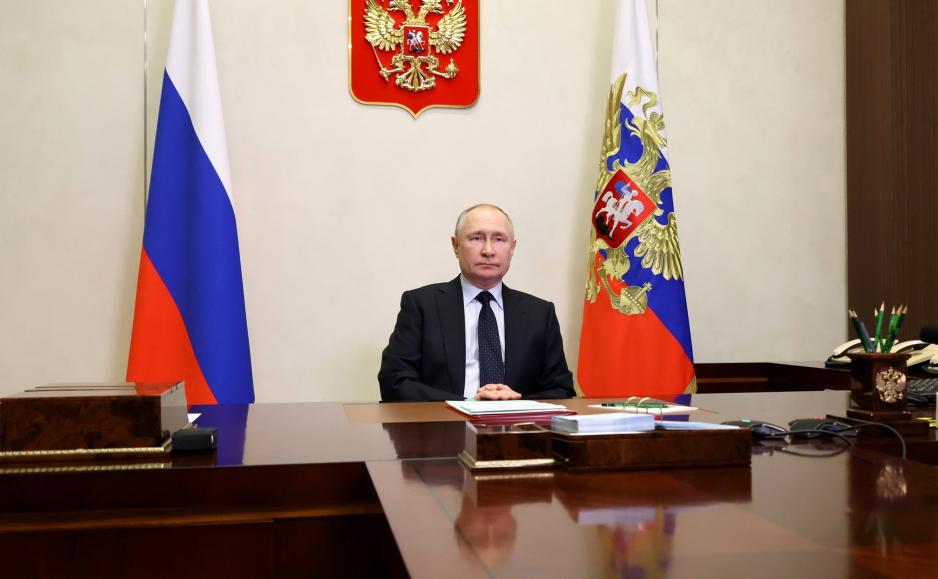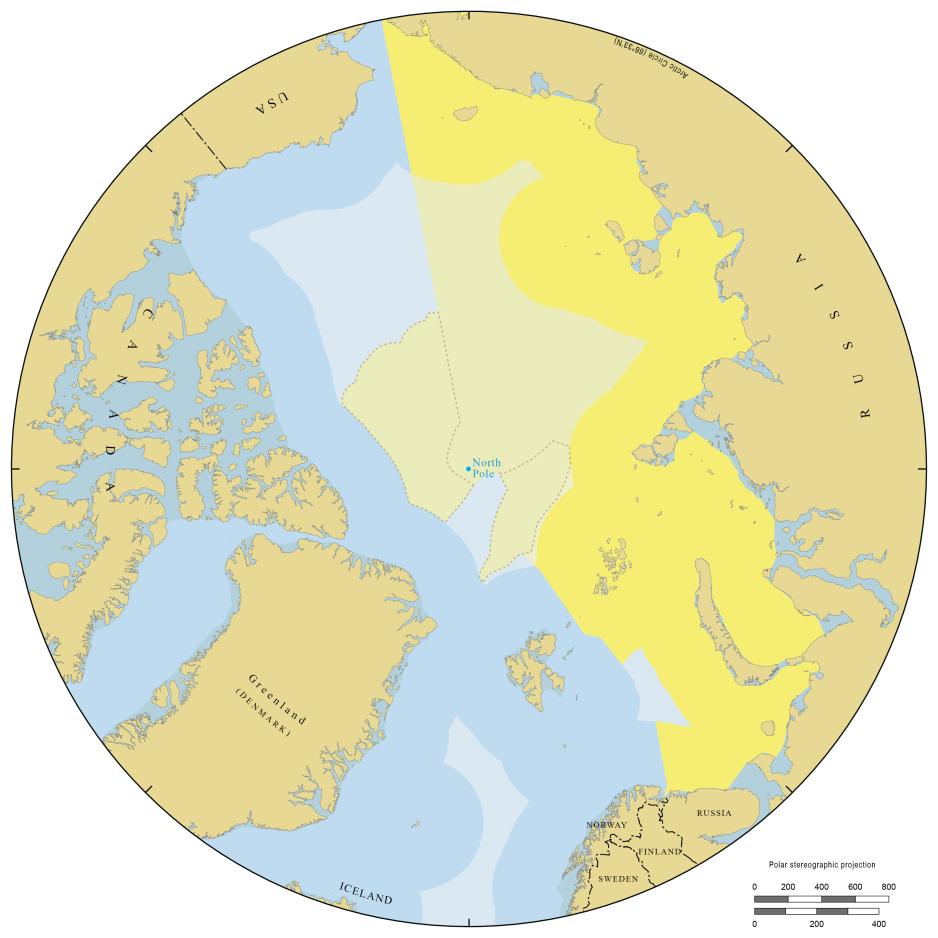Putin Discusses Russian Territorial Claims in Arctic with Security Council

President Putin discusses expansion of Russia’s territorial claims with the permanent members of the Security Council. (Source: Kremlin)
Russian President Putin and members of the country’s Security Council deliberated about the Russia’s outer border of the continental shelf in the Arctic. It follows the development of a plan by Russia’s Federal Security Service last month on how to counter foreign provocations in the country’s Arctic claims.
President Putin convened with members of the Security Council, including Defense Minister Sergei Shoigu and Deputy Prime Minister Tatyana Golikova to discuss Russia’s territorial claims in the Arctic. The country submitted its application for a vastly expanded Exclusive Economic Zone (EEZ) to the United Nations’ Commission on the Limits of the Continental Shelf (CLCS) in 2001 with revisions in 2015 and 2021.
The revision in 2021 extends the Russian claim all the way to Canada’s and Greenland’s EEZs and added around 705,000 square kilometers to the previous submission.
The submission claims large parts of the central Arctic Ocean as a continuation of Russia’s continental shelf. The Committee has yet to hand down a decision regarding these claims, some of which stand in direct competition to submissions made by Canada and Denmark (via Greenland).

Russia’s existing EEZ in bright yellow, original extensions submissions in pale yellow-green, and the 2021 additions signified by the dotted lines adjacent to the North Pole. (Source: CLCS)
During the Security Council meeting, Putin asked Deputy Prime Minister Golikova to provide an update on the status of Russia’s claims.
“Today we have several important issues concerning both the domestic agenda and the issue of the outer border of the continental shelf of the Russian Federation in the Arctic Ocean.”
Exercising control
Russia has become increasingly assertive over its territory and waterways in the Arctic, including Putin considering new legislation to ban the travel of foreign vessels along the Northern Sea Route.
Last month Russia’s Federal Security Service (FSB) announced plans on how to counter foreign influence and incursions along Russia’s main trade route in the region, the Northern Sea Route.
The FSB specifically noted the risk of provocations as the legal regime related to the Arctic shelf resources remains “incomplete” and claims have not been settled.
The war has eroded Russia’s conventional strength in arms
The plan, jointly developed with the Ministry of Defense, describes the importance to build-up reconnaissance and destructive assets along the coast and archipelagos of the Arctic Ocean. The FSB describes an urgent need for enhanced monitoring of ships and vessels and warns of the US Navy’s intention to carry out Freedom of Navigation exercises in the region.
The plan calls to develop and maintain “means to refuse unauthorized passage of the strait zones in the waters of the Northern Sea Route.”
Specifically the plan warns that there may be a passage of vessels of the US Navy, either a transit passage along the entire water area of the Northern Sea Route from west to east or in the opposite direction or a passage from the Bering Strait to the New Siberian Islands or from the Barents Sea to Severnaya Zemlya archipelago. The FSB plan also states that a simultaneous entry of two U.S. Navy ships from the western and eastern directions would represent a particular challenge. Such a freedom of navigation exercise could also be accompanied by maneuvering in the immediate vicinity of the home base of the Northern Fleet on the Kola peninsula and the Eastern Military District.
The Kola peninsula in particular is of a sensitive nature for Russia as it is here where parts of the country’s nuclear arsenal and second-strike capabilities are located. The Ukraine war has further enhanced the significance of these Arctic assets, explains Rebecca Pincus, Director of the Polar Institute at the Wilson Center.
“The war in Ukraine has eroded Russia’s conventional strength in arms, in some ways lending even more significance to its very high end strategic capabilities: many of which are concentrated in the Kola peninsula. So this does mean that intelligence and surveillance of that area, and those capabilities, is of tremendous importance," Pincus concludes.



